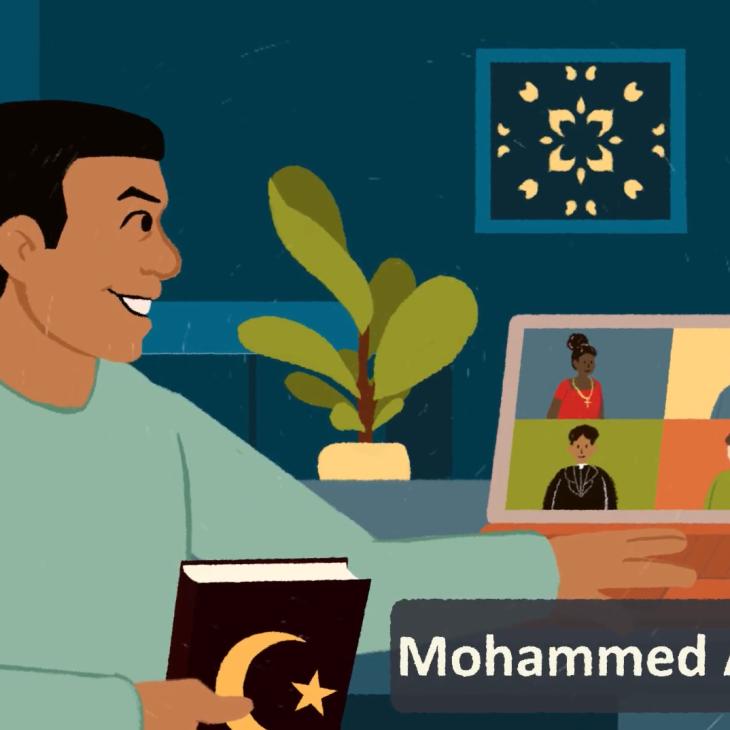
IFYC’s innovative, online learning experience, #Interfaith: Engaging Religious Diversity Online, aims to equip a new generation of leaders with an increased awareness of the role the internet is playing in our civic and religious life. By using #Interfaith, interfaith leaders will be trained to maximize the impact of digital technologies for the common good.
Over the course of the internet’s history, we have become accustomed – and even resigned – to the idea that the internet is a place where people become polarized and misinformed. But at its beginning, the internet was widely viewed as an extraordinary opportunity to learn about and interact with diverse people from around the world. In 2014, Pope Francis wrote: “The internet offers immense possibilities for encounter and solidarity. This is something truly good, a gift from God.”
The internet is, of course, what we make of it. For interfaith leaders, the internet must be understood and leveraged for the critical work of building bridges between people of different religions and worldviews. This involves learning about the technology, but even more importantly, it is about understanding yourself, and how to approach others online in a way that leads to building bridges, rather than burning them.
Try these three practices when you’re online:
1. Know Thyself
Consider how you would like to cultivate self-awareness when you’re online by first asking, “What impact do you want to make…and how do you want to live your life?”
This could look like pausing before starting in online, asking yourself about your purpose or making a note when something happens that causes you to react emotionally (either positively or negatively).
Another practice to consider is setting a timer so that you can take five-minute reflection breaks every so often. Be intentional about growing your self-awareness and grounding your work.
2. Sacred Pause: Take Your Time
The internet is fast. Information, both good and bad, can go around the world in a single click, but you can control your own pace. You can respond quickly, but that doesn’t mean you have to do so.
Rabbi Josh Stanton suggests that taking a moment before replying online is one of the most important tools we can use for bridgebuilding: “In many traditions, the notion of the pause – the bechira in Hebrew – offers a point in which we have to choose. Pausing just long enough online to formulate a [better] response to something or generate a [better] initial line of conversation…The sacred mindfulness practice of giving myself just one more breath between receiving a signal and responding to it [can] create a spark of the sacred between myself and someone else online.”
3. Practice Curiosity by Asking Questions
As you’ll see in the case study below, Mohammed’s first post on Facebook consisted of a brief introduction and then three questions. Mohammed led with his curiosity about the beliefs of people very different than himself, and he did not have a pre-conceived idea of the correct answers.
Honest questions (that is, questions that are genuinely curious and not intended to teach or make a point) indicate to others that we value them and their ideas.
A Case Study in Bridgebuilding Online
There are infinite ways to build bridges online. Take the example of an interfaith leader, Mohammed AL Samawi, who used online spaces to build connection across difference.
In 2010, a Yemini Muslim man wrote a message on Facebook: “Greetings from Yemen! My name is Mohammed AL Samawi and I am a Muslim living in Yemen. What do you think of Islam? What do you think of Muslims? What do you think of Yemenis?”
Mohammed had been taught to be suspicious of people of other religious traditions, but after a positive interaction with a Christian teacher, he turned to the internet to encounter people of other religions, especially Jews. An Israeli Jew answered Mohammed’s Facebook post, and they began a dialogue. This encounter led Mohammed to start an interfaith dialogue group online, which in turn led to him becoming a self-described “interfaith activist.”
When he became targeted with violence in his home country for his interfaith work, his interfaith friends from around the world helped him to escape Yemen and immigrate to America, where he founded the Abrahamic House, an interfaith organization “committed to the exchange and education of core values that define our religious traditions.”
Please watch this 5-minute video of Mohammed telling his story.
Share
Related Articles
Mohammed’s story shows the power of the internet to transcend geographic location and cultural bias to form connections between people who might never have met otherwise.
However, technology is not the only tool that Mohammed used in his efforts to build bridges. His open mind and open heart, and the open questions in his initial post were equally responsible for the success of his interfaith work and the bonds that saved his life.
The internet provides the technology to ask questions of people who are far away – both physically, and in terms of their beliefs – and it can bring them closer as we gain understanding in both directions.
Check out these resources for going deeper:
For more, visit the open-source #Interfaith curriculum. This article is excerpted from the #Interfaith lesson on bridgebuilding.
This article was originally posted on February 25, 2022.



